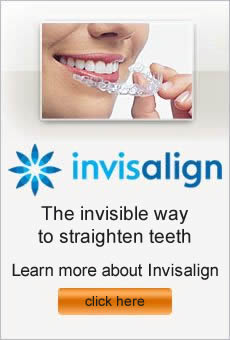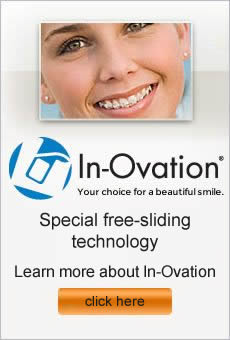If you have had braces and are now wearing a retainer, you won’t want to lose it! Wearing your retainer ensures that the hard work and diligence you have endured during braces pays off for the rest of your life. The convenience of a retainer means that now you’re able to take it out as recommended by your orthodontist.
Whether it’s recommended that you wear your retainer at all times except for during meals or snacks, or whether you’re to wear it only at night, there are going to be times when you take your retainer out of your mouth, opening up the possibility that the retainer is lost or damaged. Follow some basic tips to ensure that your retainer never needs replacement or repair and that your teeth continue to look and to function as well as they did the day your braces came off.
- Get a bright retainer case. A bright case will be far less likely to be overlooked. You may feel a little conspicuous, but you won’t ever walk away from the case without noticing it. Label the case so that if you do happen to leave it, someone can return it to you.
- If you leave your retainer off for periods of time, keep the case in one spot. Whether that spot is your sink, your nightstand, your purse, backpack or locker, habitual storage is the key to keeping your retainer safe.
- Never, ever wrap your retainer in a napkin. It is too likely to be grabbed and discarded as trash. If you remove your retainer at lunch, keep the case handy in your pocket, purse or backpack. You know where it is, it’s safe and tucked away. “If it’s not in your face, it’s in the case” should become your motto.
- Wear your retainer when your orthodontist has instructed. When it’s in your mouth, you won’t lose track of it! Wearing your retainer makes your time in braces mean a lifetime of beautiful teeth that function as they should, providing you a base for good oral and general health.
Follow these steps to keep your retainer a part of your oral habits for life.
Metal braces used to go hand-in-hand with teenage years. Those awkward years were made so much worse with the taunts of “metal mouth” or “brace face.” Today, if your teen is dreading those comments, there are alternatives, particularly Invisalign Teen
Has your teen been told that braces are a necessity? Is he or she fearful of time spent in metal braces? Invisalign could be the solution, providing an “invisible” way to straighten and align crooked teeth.
Not all teens are suited for treatment with Invisalign. The aligners must be worn diligently, up to 22 hours a day, in order to work properly. Teens may be tempted to remove them more often than recommended, leading to far longer treatment time or ineffectual treatment.
Changes in Invisalign treatment are addressing the specific needs of teens with solutions like the blue dot wear indicator, which allows dentists and parents to determine if the teen is wearing the aligner the recommended amount of time.
Power ridges provide the maximum force necessary to exact complex movements in the mouth, including the movement of tooth roots. Because some teens are still in the process of having their teeth erupt, Invisalign aligners can feature eruption tabs or other design elements for teeth that are still in the process of erupting.
Benefits like these allow Invisalign to cater to a teen’s specific orthodontic needs while still providing all of the things that make Invisalign aligners so popular with patients of all ages.
Invisalign makes it possible to remove the plastic aligners while teens are eating or cleaning their teeth. Metal braces can trap unsightly bits of food, leading to a teen being self-conscious. Oral hygiene habits remain far easier with Invisalign than with traditional metal braces. Flossing takes place normally, while flossing with traditional metal braces is very challenging.
If you have questions regarding whether or not Invisalign or traditional metal braces are right for your individual teen, talk to a skilled orthodontist today. Your orthodontist will determine if Invisalign will be the most effective treatment to address your teen’s orthodontic needs.
As your child begins to lose primary teeth and permanent teeth are growing in, you may start to wonder when or if an orthodontic evaluation is needed. An orthodontist is a dentist with specialized training in aligning and straightening teeth. The American Dental Association and the American Association of Orthodontists recommend all children be evaluated for orthodontic treatment by age 7, or about the time permanent teeth begin erupting. By this age, orthodontists can detect potential problems with emerging teeth and jaw growth and recommend future treatment.
Starting the process early doesn’t mean your child will definitely need braces or get braces right away. However, early screening with an orthodontist can identify potential problems such as overcrowded teeth or bite problems, also known as malocclusion. Most orthodontists recommend seeking treatment for dental problems before your child stops growing. While growth is still ongoing, correcting dental problems is usually a shorter and less complicated process.
Traditionally, orthodontic treatment has been a single-phase process that begins between the ages of 8 and 14, after all baby teeth have fallen out and the majority of permanent teeth have replaced them. However, many orthodontists are now recommending a two-phase treatment plan which can begin at an earlier age. The first phase usually involves the use of a dental appliance as opposed to braces. The second phase includes the use of traditional braces. The braces phase is generally shorter than a treatment plan that was not preceded by dental hardware.
The best choice for you and your child will largely depend on the severity of your child’s dental problems. Have an evaluation early and discuss with your child’s dentist or orthodontist the best course of action to provide a lifetime of beautiful smiles.
Kids orthodontist in Sherman Oaks CA
If you think straightening teeth with braces is only for pimply-faced teens, think again. Thanks to modern technology, today’s orthodontic treatments are providing adults with more subtle and less visible options that you may find appealing for improving your smile. Why should you consider orthodontics as an adult?
Straighter teeth create a more beautiful smile that results in a more positive self-esteem, allowing you to present yourself to the world with improved confidence.
Even if you had braces in your younger years, as you age teeth tend to shift back toward their original positions, creating overcrowded or crooked teeth.
Straight, evenly aligned teeth are easier to keep clean, resulting in less decay and better overall oral health.
Braces can help correct bite problems that cause jaw pain, as well as change the position of neighboring teeth to make room for bridges, crowns, or implants.
Popular choices for adult orthodontic treatment include ceramic braces that are clear or tooth-colored, braces that have brackets that attach to the back of the teeth, and options like Invisalign that utilize clear plastic aligners to gently move teeth into a new position. All of these options offer lower profile appliances that most adults find appealing for improving their smile. Treatment times vary dependent on your choice of treatment and the extent of your orthodontic issues. To ensure long lasting results, you will likely need to either wear a retainer or have a permanent retainer placed.
To find out more about how orthodontics can vastly improve your smile and quality of life at any age, consult with a qualified orthodontist in Sherman Oaks, CA.
Getting braces is an exciting step toward having the best smile possible. It can fix problems with bite alignment, as well as addressing gaps between teeth or overcrowded teeth.
Before you get braces, you will need a full dental check-up. Your dentist will look for signs of decay or gum disease, and your teeth will receive a thorough cleaning. Photographs, impressions and x-rays will be taken for your orthodontist to study your teeth. At times, permanent teeth are extracted due to overcrowding on the jaw, allowing room for the remaining teeth to line up perfectly.
In the weeks before your braces are applied, you will want to enjoy some foods you will have to avoid in the immediate time following the application of your braces. Eat hard or chewy foods now, as eating them in the days following your application will cause discomfort.
Be sure to brush your teeth and to floss thoroughly the day your braces are to be applied. Having a clean mouth will allow your orthodontist to work more quickly and efficiently.
Keep a positive outlook! Focus on the appealing results to come for your teeth and smile. If you are experiencing severe anxiety, talk to your orthodontist about sedation dentistry options available to you. Many times, a mild oral sedative taken an hour before your procedure can help your mind be at peace while your orthodontist works.
Applying braces takes time. Be patient as your orthodontist works. Many offices have music or movies to help you pass the time. Ask what patient comforts are available for you.
Once your braces are applied, you will feel some discomfort as your teeth adjust. It can be painful to eat or drink. Plan ahead by acquiring anti-inflammatory pain medicines. Have plenty of soft foods and tepid liquids prepared to consume so you don’t have to worry about cooking when you’re not feeling well. The braces may irritate your tongue or cheeks. Wax can be used to cover rough brackets and to protect your mouth until it becomes accustomed to the braces.
Schedule your visit with Burbank orthodontist Dr. Fotovat about these and other recommendations to prepare you for braces.
Being a teenager can be difficult, and being a teen whose smile could use some improvement can be even more difficult. If your teen suffers from gapped, crooked, crowded, or misaligned teeth, you may be looking into Invisalign with your teen’s orthodontist as a smile solution.
In the past, metal braces were the standard for teens, leading to “metal mouth” smiles and the worry that food is caught there during lunch or after snacks. Metal braces can lead to even more self-consciousness for your teen. Using Invisalign will lead to the same results as traditional metal braces. While metal braces use wires and brackets to straighten teeth, Invisalign uses clear plastic trays, allowing your teen’s process of tooth straightening to be less obvious.
The Invisalign process begins with impressions and x-rays, providing valuable information regarding the current condition of your teen’s teeth. The mold made from the impressions serves as the reference for creating the custom-made Invisalign trays. A series of trays are used, gradually altering the teeth, leading to a more comfortable straightening process.
Invisalign trays are removed before eating, eliminating the trepidation associated with eating in public with traditional metal braces. Because there is no hardware to dislodge, there are no food restrictions, and your teen may continue to enjoy whatever foods desired.
Your teen will need to have good oral hygiene habits. Flossing once a day and brushing after mealtimes or at least twice a day is best. Invisalign trays are removed prior to these activities, allowing for an ease of oral care not provided by traditional braces.
Be sure your teen wears the Invisalign trays as recommend by his or her orthodontist. In order to maximize Invisalign effectiveness, your teen must wear the trays at all times, except during mealtimes or when brushing or flossing.



